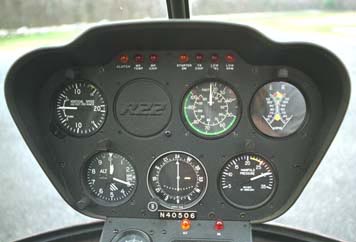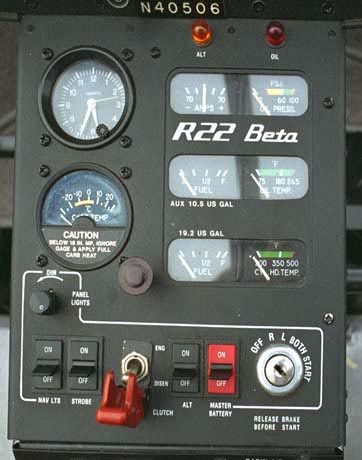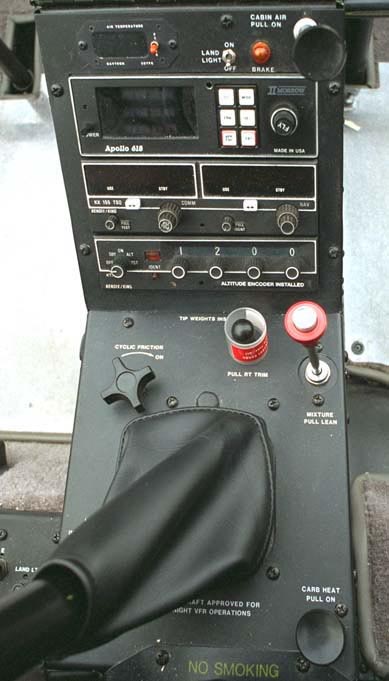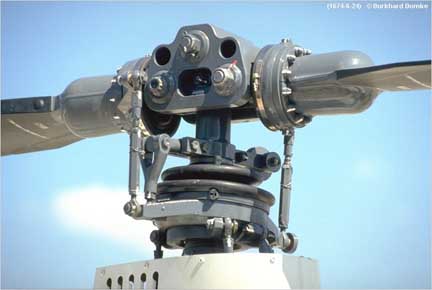 Steve Mushero
Steve MusheroFlying
See a Log of my training - updated after every flight !.
Quote:
'When once you have tasted flight, you will forever walk the earth with your
eyes turned skyward, for there you have been and there you will always long to
return'
Leonardo da Vinci
This is the helicopter we use - a Robinson R22B. Here is another link about our helicopter from a school in Seattle.

 Close-ups of instrument panel are down below
Close-ups of instrument panel are down below
This is the school where I am learning.
Perhaps I'll run a lottery for the privilege of taking the first flight with me !
A great quote from the RAF:
"A superior pilot is one who stays out of trouble by using his superior judgment to avoid situations which might require the use of his superior skill."
Ten Commandments of Helicopter Flying:
Other lessons in progress:
* Navy says that turning landing lights on in bird flock significantly reduces chances of strike.
* Carb heat - how does auto work and what is landing position (NTSB says off)
Also, from the Robinson safety course:
Close-ups of instrument panel:
Warning Lights - chip and temp lights are bad news, as is low fuel and low RPM:

Upper panel - that's VSI, Airspeed and RPM on top, Altimeter, turn indicator (not used) and manifold pressuer on bottom.

Middle panel - clock and carb temp on left, oil, fuel temp and alternator on right.
Swtiches for lights, alternator, clutch, mags and master below.

Lower panels, with temp guage, landing light and air, then GPS, radios and transponder below. On the horizontal are cyclic friction, trim, and mixture (never touched in flight).

The Robinson R-22 Rotor Hub; I spend lots of time looking at this
in great detail during the pre-flight; anything here breaks and very
bad things happen. Fortunately, it never happens.
